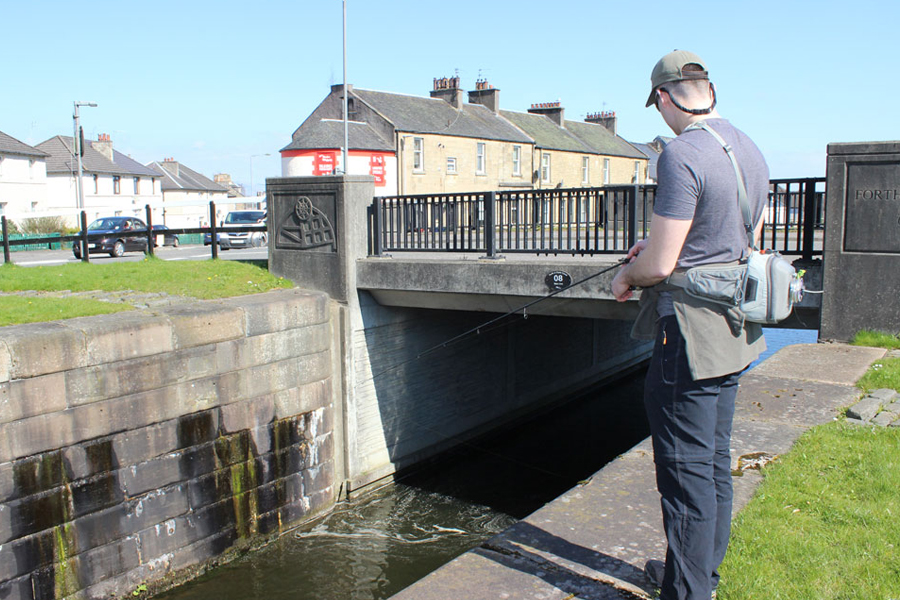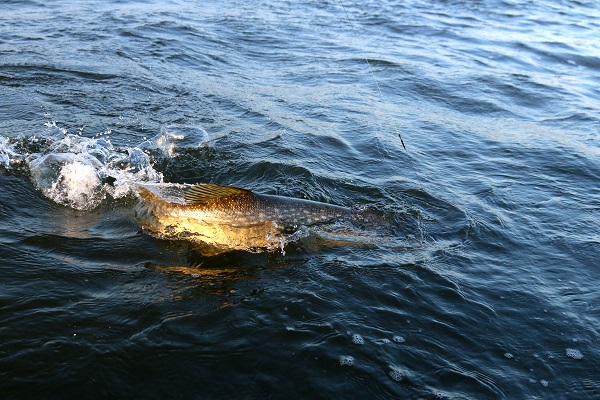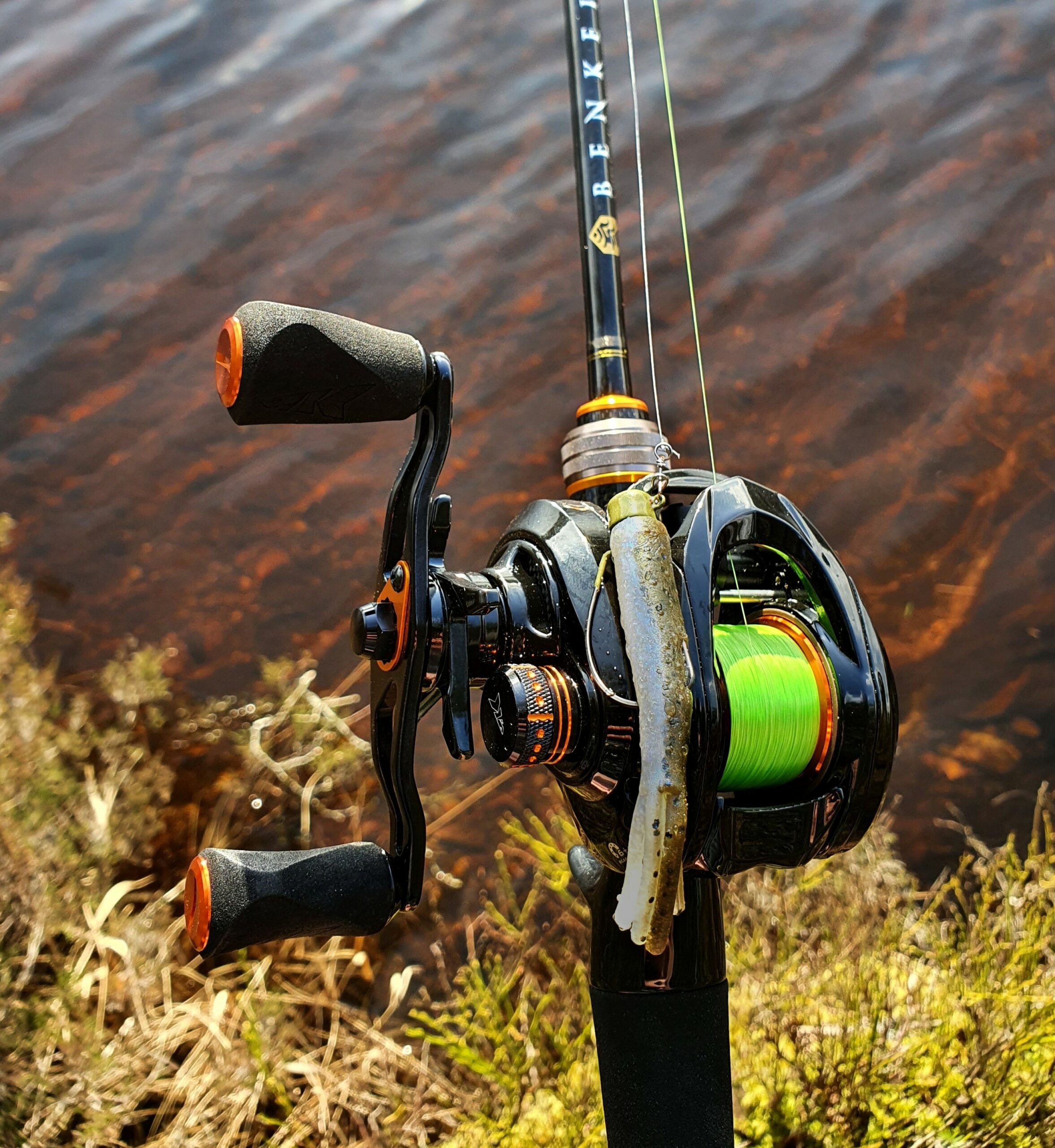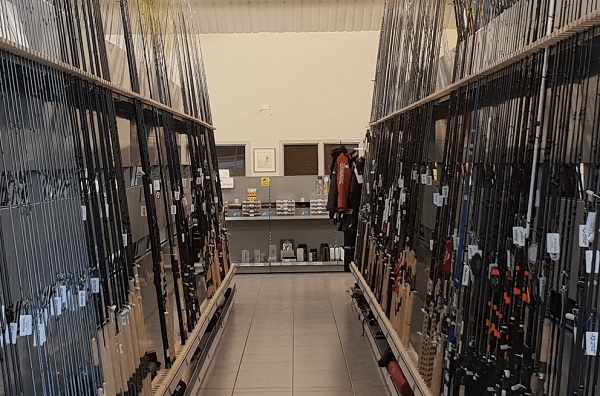Canal lure fishing is growing in popularity and we can see why! In an era where hectic work life and family commitments can heavily reduce our time on the bank, a style of affordable fishing that requires minimal tackle and minimal fishing time sounds very appealing.
Although canals are often relatively narrow and shallow, these waterways weave through miles of our glorious cities and they offer lure anglers accessible lengths of watery playgrounds, located right on our doorstep.
Not only that, this urban style of fishing is a great way for youngsters to be introduced to the world of fishing.
As we previously mentioned, canal lure fishing requires minimal tackle which allows you to be mobile on the bank, allowing you to cover water more efficiently.
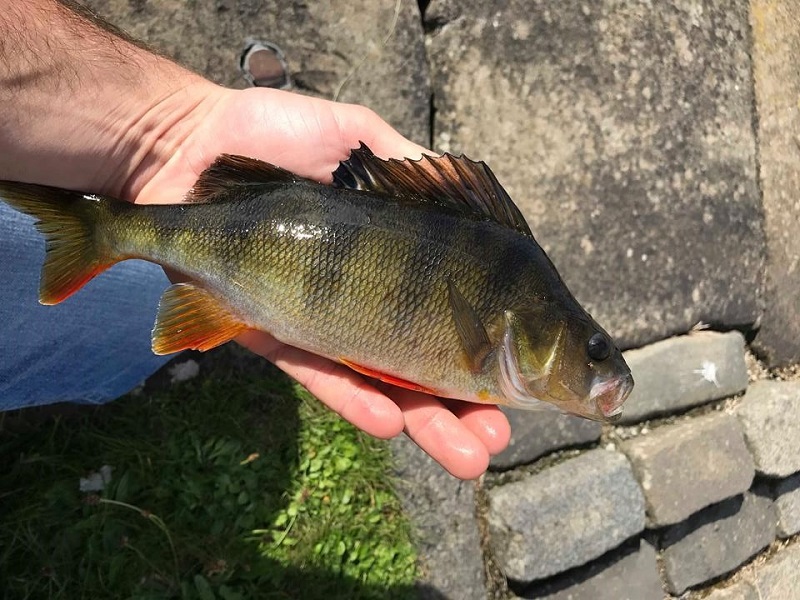
Canal Lure Fishing Gear
So what do we actually require? We recommend a 7ft dropshot rod with a 0.5 gram to 10 gram casting weight. This allows you to fish with a finesse approach and the sensitive tip of a drop shot rod will allow you to feel and see the most subtlest of bites. The shorter rod length will also aid casting accuracy ensuring you can place your lure in those very tight hotspots.

Reel wise, we would recommend pairing your dropshot rod up with a 1000 size fixed spool reel. Since we are fishing narrow waterways, we will not be casting any great distance. The smaller reel will also accommodate our lighter breaking strain mainline.

When it comes to your main line, an 8-10lb braided mainline is recommended. It will balance the overall setup nicely and the lower diameter line will make casting lighter lures easier.
A small shoulder bag or hip bag is ideal for transporting your terminal tackle. Hooks, soft plastic lures and jigheads can all be carried in small modular tackle boxes.

Canal Lure Fishing Tips
When it comes to cracking the code to lure fishing canals, we need to look at the available features.
Many canals, at first glance, can appear barren and devoid of any cover but observe closely. There are several spots on canals that will hold perch.
From lock gates, underwater ledges, slopes and weed beds all these areas are ideal ambush points for predators. Most takes will come when fishing tight to those areas or when your lure is passing through these distinctive features.
Analysing areas where match anglers converge can provide indication as to where the perch may be holding up. For example, if big bags of silverfish have been taken from a specific area, you can guarantee that predators will be waiting to ambush close by.
Bridges
Bridges are great features that offer shade and sanctuary for all kinds of fish. Prey fish especially love cover as it provides them comfort and sanctuary as it reduces the chance of predation from above. The shade from bridges also provide shelter during those bright days and with perch being visual hunters, targeting bridges would be our first port of call during the summer months.
Try covering the margins under the bridge as well as the open water in the middle of the canal. The overhead shelter will help increase your preys confidence and will explore their sheltered habitat.

Lock Gates
Lock gates provide oxygen in the canal. This influx of oxygen creates a haven for fish as well as providing them with a food source as particles are washed over the lock gate. Lock gates also provide deeper water to allow fish to escape from bright light conditions and also provide sanctuary.

Try casting the lure into the white water from the overflow. You’ll be surprised how many fish will be sitting directly below this awaiting food particles to be swept over t¬¬he top of the lock gate.
Boats
Boat traffic can be a nuisance for most anglers, but for the lure angler they can be an advantage. Moving boats can stir up silty canal bottoms which can expose invertebrate or other water life which triggers prey fish and predators to feed. So casting at the back of a passing boat can put you in a good opportunity to catch.
Moored boats are also a great feature. The underside of a boat hull provides shelter which is a magnet for prey fish and also provides great ambush points for predators.
Moored or static boats can also provide a food source for fish. Food waste can be thrown overboard which is effectively pre-baiting an area, which can create a hot-spot for prey fish and in turn attract predators.
Casting as close as possible to the bottom of the boat will increase your chances of catching. Try under arm casting to increase accuracy and decrease the possibility of hitting someone’s boat.
Foliage
With canals being a man-made structure, their construction have seen their edges taken back by nature. As trees, rushes and brambles overlap canal edges, this natural foliage provides a great ambush point for predators. Be careful when targeting these natural ambush points though, as they contain many snags due to their unpredictable growing nature.

When fishing around foliage, cast as tight to the structure as you possibly can. It’s a nerve racking prospect but predators will hold extremely tight to these features. The tighter you can cast to them the more chance you have of luring a specimen out from its hiding spot.
Margins
Finally, do not neglect the margins on a canal. These provide a wall of safety for prey fish and a great ambush point for predators also. When initially fishing the margin, ensure you are far enough away not to cast a shadow or be seen from above – especially if you’re covering the water with a vertical jigging approach. Once you’ve covered the water at your feet, you can then cast down the margin tight to the canal wall to ensure you’re covering the structure efficiently.

Lure Sizes
As for lure size, it comes down to your ambitions for your session. If you’re extremely limited on time, scaling down lure size and hook size will see a lot of action from smaller fish as you present a lure that is small enough for anything to engulf.

If you are looking to target larger specimens, then opt for a slightly larger lure to start with. Larger lures do tend to reduce the amount of smaller fish bites but both large and small lures both have their day. So try to be open-minded when it comes to lure size choice. There will be occasions where larger fish might want a micro-sized snack.
Lure presentation
Soft plastic lures are probably one of the most versatile perch lures available on the market. They can threaded onto a jighead and jigged along the bottom or can be presented nose hooked on a drop shot rig. Both methods can be deadly on their given day. One thing to pay attention to though is the weight applied to the lure.

Since we will be fishing in mostly shallow water, 3-4ft, it’s vital to ensure our soft plastic lures look and fall naturally in the water – so it looks like we are imitating a dying or feeding prey fish. We recommend jigheads and dropshot weights between the 3 – 5-gram range. The 3-gram weight is ideal for static water but if you encounter a slight flow in the water, opt for a 5-gram jighead or dropshot weight.
Using a 3 gram or less jighead in flowing water may hamper the lure presentation and may also make us lose contact with the lure which would result in poor bite detection. You want to always maintain contact between yourself and the lure and keep the rod tip under tension so you can detect bites.
Lure Colour
Ranging from fluorescent/hot colours all the way through to natural patterns, lures come in a wide range of colours.
Lure colour should be based on the water clarity. If the water is coloured, opt for a fluorescent colour as it will stand out better. Black is also another good colour that stands out in murky water conditions. Try and select a soft lure that contains spikes or ribs as these also create additional vibration in the water and can create bubbles in some instances due to their unique designs.
In clear water conditions, look at more natural or darker colours. They create a silhouette in the water and stand out better than fluorescent colours do. Try various colours throughout the day to see if there is a preference on that given day.
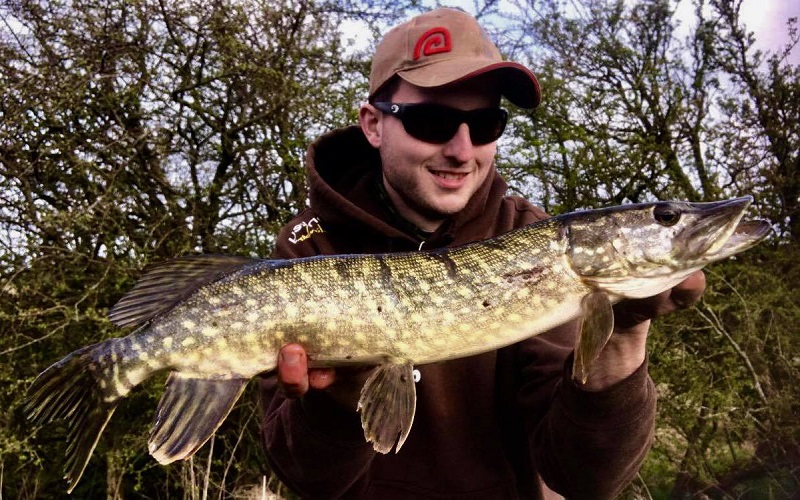
Sometimes you can pick up the odd jack pike too.
Summary
If you have limited fishing time due to life commitments or you’re looking for an affordable fishing method that can be done locally around most cities, then canal lure fishing is the answer you’ve been looking for. This mobile and exhilarating method is growing in popularity due to its versatility and we think it’s a great way to spend your lunch hour at work or even introducing a youngster to the sport.
Remember, fish in tight to features, and experiment with lure colours and sizes to find the winning formula for the day. Don’t dismiss the open water of the canal if you struggle to locate fish around features or structure. They can possibly be actively moving/hunting. Match your jighead weights or dropshot weights to the depth and flow of the canal you are fishing to allow you to fish your lures effectively and allow them to fish more naturally.
To learn more about various finesse fishing techniques, be sure to check out our articles on Jigging, Dropshotting, Texas rigs and Carolina rigs.


